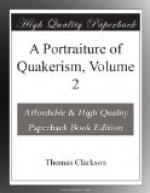Two baptisms are recorded in scripture—the baptism of John, and the baptism of Christ.
The baptism of John was by water, and a Jewish ordinance. The washing of garments and of the body, which were called baptisms by the Ellenistic Jews, were enjoined to the Jewish nation, as modes of purification from legal pollutions, symbolical of that inward cleansing of the heart, which was necessary to persons before they could hold sacred offices, or pay their religions homage in the temple, or become the true worshippers of God. The Jews, therefore, in after times, when they made proselytes from the Heathen nations, enjoined these the same customs as they observed themselves. They generally circumcised, at least the proselytes of the covenant, as a mark of their incorporation into the Jewish church, and they afterwards washed them with water or baptized them, which was to be a sign to them of their having been cleansed from the filth of idolatry, and an emblem of their fitness, in case of a real cleansing, to receive the purer precepts of the Jewish religion, and to walk in newness of life.
Baptism therefore was a Jewish ordinance, used on religious occasions: and therefore John, when he endeavoured by means of his preaching to prepare the Jews for the coming of the Messiah, and their minds for the reception of the new religion, used it as a symbol of the purification of heart, that was necessary for the dispensation which was then at hand. He knew that his hearers would understand the meaning of the ceremony. He had reason also to believe, that on account of the nature of his mission, they would expect it. Hence the Sanhedrim, to whom the cognizance of the legal cleansings belonged, when they were informed of the baptism of John, never expressed any surprise at it, as a now, or unusual, or improper custom. They only found fault with him for the administration of it, when he denied himself to be either Elias or Christ.
It was partly upon one of the principles that have been mentioned, that Jesus received the baptism of John. He received it as it is recorded, because “thus it became him to fulfil all righteousness.” By the fulfilling of righteousness is meant the fulfilling of the ordinances of the law, or the customs required by the Mosaic dispensation in particular cases. He had already undergone circumcision as a Jewish ordinance, and he now submitted to baptism. For as Aaron and his Sons were baptized previously to the taking upon them of the office of the Jewish priesthood, so Jesus was baptized by John previously to his entering upon his own ministry, or becoming the high priest of the Christian dispensation.




